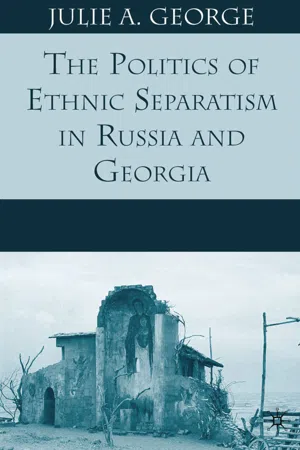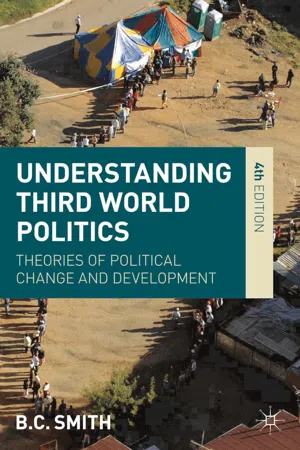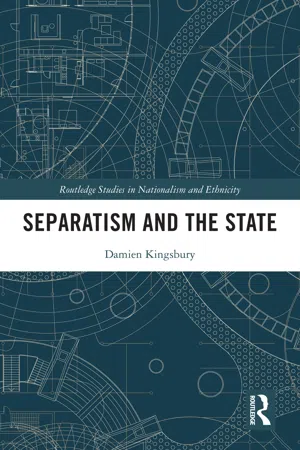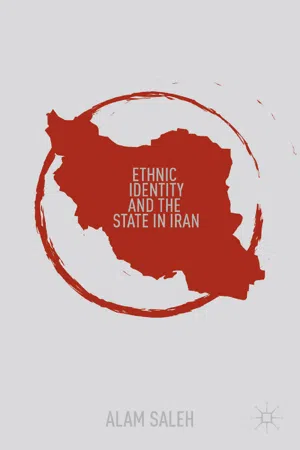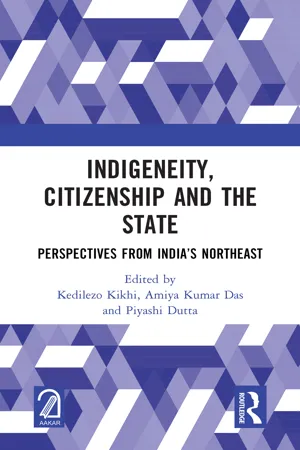Geography
Ethnic Separatism
Ethnic separatism refers to the desire of a specific ethnic group to break away from a larger political entity in order to form an independent state based on their ethnic identity. This movement is often driven by a sense of cultural, linguistic, or historical distinctiveness and can lead to political and social tensions within a region.
Written by Perlego with AI-assistance
Related key terms
1 of 5
6 Key excerpts on "Ethnic Separatism"
- J. George(Author)
- 2009(Publication Date)
- Palgrave Macmillan(Publisher)
CHAPTER 1 Ethnic Separatism in Russia and Georgia A s the Soviet Union crumbled, leaders of ethnic regions in the successor states began demanding immediate political, cultural, and economic autonomy from their new central governments. Increased levels of Ethnic Separatism occurred most consistently among the ethnic groups who had dominated autonomous regions during the Soviet period. Regional political leaders, as well as those of nationalist movements, charac- terized such demands as reasonable and just, results of the difficulties of being an ethnic minority in a multiethnic state. But the extent of the demands dif- fered across regional contexts, and leaders used varied means to achieve their stated goals. Of the 35 ethnically designated territories inherited by Soviet successor states, 32 sought greater sovereignty from their central governments, and 7 of those asserted their desire for independence. From the 7 indepen- dence seekers, 4 fought secessionist wars against the central government. 1 The former Soviet pattern of Ethnic Separatism, often conceptualized as one-time dichotomous choices between seeking independence and remain- ing within the state, between violence and nonviolence, unfolded as a process of changing regional policy goals. Likewise, regional decision making con- cerning the use of violence varied over time. Ethnic regional leaders often began their efforts toward autonomy with low-level demands, for example, the right to use regional symbols such as flags and seals. They increased their demands from symbolic politics to claim forms and mechanisms of economic and political power once held by the central government. This early process often proceeded in a cycle of escalating claims to autonomy. Yet some regions demanded much more than others. In the cases where the demands continued to independence and confrontations escalated to- eBook - PDF
Understanding Third World Politics
Theories of Political Change and Development
- Brian Smith(Author)
- 2013(Publication Date)
- Red Globe Press(Publisher)
Surveys of political attitudes – mainly, it has to be admitted, in developed countries – have revealed that significant numbers, and often majorities within the ethnic groups concerned, are prepared to accept a degree of constitutional autonomy, rather than separation for their country – a finding that almost certainly applies to developing countries. However, surveys also show that, even among those who do not favour separation and who reject violence as a means to that end, there are many who sympathize with those engaged in violent resistance – explaining ‘how guerrilla struggles have been maintained for years in the face of overwhelming odds’ (Connor, 1988, p. 216). The demands of separatist movements may be significantly modified over a period of time, so that national independence is displaced by lesser objectives, such as the creation of a new territorial unit within a federa-tion, official recognition of a language, and symbolic distinctions. Equally, modest demands can escalate under pressure of events, such as East Pakistan’s progression from linguistic equality to autonomy in a loose federation, and from there to secession (Wright, 1976). Ethnic groups vary in their demands. In South Asia, for example, some have demanded reforms within existing state structures, such as affirmative Nationalism and the Politics of Secession 171 action policies. Others have called for the restructuring of the regime, including devolution and provincial autonomy. Still others agitate for the restructuring of the state through secession and irredentist change (Phadnis and Ganguly, 2001). In Palestine, the nationalist movement is divided between those who support the creation of a sovereign state consisting of the occupied territories, and those wishing to transform Israel from a Jewish state to a democracy for all its citizens, regardless of religion and ethnicity (Farsoun and Aruri, 2006). But the ultimate goal of secessionists is the creation of a new nation-state. - eBook - ePub
- Damien Kingsbury(Author)
- 2021(Publication Date)
- Routledge(Publisher)
This first principle of separatist movements is that it must identify with a particular territory or area of land in relation to a larger territory, usually a state. It is axiomatic that for separatism to exist it must apply to separating a particular territory from a state or other pre-existing territory. Separatist movements therefore have a defined territory – a political geography – they claim as the ‘homeland’ of their bonded group (Toft 2003:ch 1) in relation to the larger, host state.In some cases, that territory claimed by separatists might exceed the area actually occupied by the group in question, and may refer to historical, mythical, culturally common or other irredentist claims. It is important to note that while there may be a claim to a particular territory, historical associations with a given territory are not always as fixed as they are sometimes claimed or assumed to be. ‘Authentic’ original inhabitants are often not that, having displaced others, and ‘sons of the soil’ may be a conceptual construct linked to an idea of a people and territory, especially for privileged political reasons.Further, conceptions of geography may differ, for example where there is an assumed over-arching association with a wider territory than may be felt by some of its particular, local inhabitants. This may be where conceptions of a separatist state are conceived in nationalist terms, but which include people who are less or uncommitted to the idea of the claimed national group, or who are other than the core national group. In this respect, political geography is, as noted by Horowitz, ‘not a fixed concept’ (2000:203).The territory claimed by a separatist movement must, by definition, be part of an existing state, or be functionally incorporated into it. A state may occupy and administer a territory in a functional sense even if that occupation and administration is not recognized by the United Nations or by most other countries, e.g. Timor-Leste under Indonesian occupation, or Western Sahara under Moroccan occupation. While claims for independent status for such unrecognized occupied and administered territories are not technically separatist (as they are not, in international law, part of the occupying state they seek to separate from), their claims to self-determination for a given territory by a bonded political group with a grievance is consistent with separatist claims. These are de facto rather than de jure - eBook - ePub
Peacebuilding and Reconciliation
Contemporary Themes and Challenges
- Marwan Darweish, Carol Rank(Authors)
- 2012(Publication Date)
- Pluto Press(Publisher)
Harff and Gurr describe ethno-nationalist groups as ‘relatively large and regionally concentrated ethnic groups that lie within the boundaries of one state or of several adjacent states; their modern political movements are directed towards achieving greater autonomy or independent statehood’ (2004: 23). Secession ‘is the formal withdrawal from membership of a polity by section. It is the attempt by an ethnic or regional group(s) to withdraw its region from the control of the state of which it is part’ (Baker, 1998: 6). Most African countries in the post-independence era are facing rebellious tendencies from secessionist groups which in one way or another consider themselves different, marginalized from the existing system of governance and culturally discriminated against. Political secession is pursued either by groups who have no hope of achieving their political and economic interests (their developmental needs) within the existing state system, or by those who believe their national identity is totally distinct and would be better expressed through the existence of a separate state.ETHNIC POLITICS AND SECESSIONIST MOVEMENTS IN ETHIOPIA Historical backgroundThe political history of Ethiopia is permeated with ethnic rivalry and conflict. Since the early dynasties, the rulers were descended only from certain ethnic groups, reinforcing the belief that they were the people chosen by God to lead the country. The Amhara dynasties in particular traced their origin from the Old Testament, claiming that the first king who founded the dynasty in the first century AD was Menelik I, the son of King Solomon of Israel and Queen of Sheba of Axum (Axum was the first dynastic state from which the later Abyssinian dynasties had their origin). This line of ancestry, sustained until 1974, received strong support from the Orthodox Christian Church, and the history of the Axumite and Amhara dynasties was glorified and used to give legitimacy to the ruling power.Throughout the Zemene Mesafinet - eBook - ePub
- A. Saleh(Author)
- 2013(Publication Date)
- Palgrave Macmillan(Publisher)
Chapter 7 Separatism and the State’s Mechanism of Control Introduction The mere existence of relative deprivation is not sufficient to pose a great threat to the state’s security. Transforming such deprivations and grievances into collective action against the regime, however, requires a politicization of ethnic identity in order to mobilize the people. In Mohammed Hafez’s words, “to be able to wage a fight, individuals will have to mobilize resources, recruit committed activists, and establish organizational structures that can withstand repression.” 1 Ted Gurr argues that “politicized discontent is a necessary condition for the resort to violence in politics.” 2 The key reason for ethnic rebellion is always of a societal nature. Ethnic groups may find themselves disadvantaged in many facets of life—economic, sociocultural, political, and ideological. 3 Ethnic elites, through the use of communication facilities such as television satellite channels and the Internet, have been enabled so as to politicize such sentiments, publicize their goals and views, mobilize ethnic activists in both peaceful and violent ways, and direct people’s anger toward the regime in Tehran. According to Milton Esman, “mobilization is the process by which an ethnic community becomes politicized on behalf of its collective interests and aspirations. This process requires awareness, usually promoted by ethnic entrepreneurs, that political action is necessary to promote or defend the community’s vital collective interests. This awareness results in the recruitment of individuals into the movement or into organizations that purport to speak for the movement.” 4 In short, any change in the balance of power between the state and its people triggers ethnic grievances and mobilizes them against the regime - eBook - ePub
Indigeneity, Citizenship and the State
Perspectives from India’s Northeast
- Kedilezo Kikhi, Amiya Kumar Das, Piyashi Dutta, Kedilezo Kikhi, Amiya Kumar Das, Piyashi Dutta(Authors)
- 2023(Publication Date)
- Routledge(Publisher)
In the words of Arjan De Haan, social exclusion is defined as the opposite of social integration, mirroring the perceived importance of being part of society, of being included. He further argues that social exclusion (or deprivation) is a multi-dimensional phenomena and deprivation is part and parcel of all social relationships (2001, pp. 25-26). Social exclusion as a multi-dimensional concept has two defining characteristics. First, it is multi-dimensional. People may be excluded, for example, from livelihood, earnings, property, housing, minimum consumption, education, the welfare state, citizenship, personal contact, or respect. But the concept focuses on the multi-dimensionality of deprivation; on the fact that people are often deprived of different things at the same time. It may refer to exclusion (deprivation) in the economic, social, or political spheres. Second, social exclusion implies and focuses on the relations and processes that cause it. People can be excluded by many sorts of groups, often at the same time; landlords exclude people’s access to land or housing; elite political groups exclude others from legal rights; priests in India may exclude scheduled castes from accessing temples; minorities may be excluded from expressing their identity; labour markets, and also some trade unions exclude people (non-members) from getting jobs; and so on. Exclusion then may happen at every level of society, as group formation is the fundamental characteristic of human society.Given these definitions of social exclusion, the ideas of exclusion are linked with ethnicity. David Brown explains ethnicity as an “ideology which individuals employ to resolve the insecurities arising from the power structure within which they are located” (1994, pp. 1-2). Accordingly, the explanation of ethnic politics must begin with the examination of the state’s influence upon the power structure. He further says, “it is clear that the state plays a major role in influencing the distribution of power, status and wealth in society enhancing the type of situational insecurities and threats with which individual and groups are faced” (Ibid.) This role involves not only the state’s influence on socio-economic disparities, but also its influence upon the advantages that accrue to those possessing a particular language, religio-cultural or racial identity. The state also provides legitimacy to the power structure in the form of a more or less explicit nationalist ideology and this state-promulgated national ideology defines the ideological parameters within which ethnic consciousness develops and operates (Ibid.). This type of building of ethnic consciousness can be found in South Asian countries like Myanmar, India, and Sri Lanka.In Assam, social exclusion has some serious repercussions for `ethnic’ groups. Nava Kishore Das (2009
Index pages curate the most relevant extracts from our library of academic textbooks. They’ve been created using an in-house natural language model (NLM), each adding context and meaning to key research topics.
